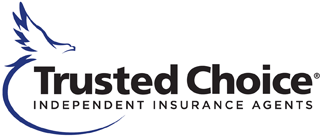Roofs are an essential part of any building, serving as the primary shield against weather conditions. They protect our homes and businesses from rain, wind, snow, and more, but they also require regular attention and maintenance to perform their role effectively. Keeping a roof in top condition not only ensures that it functions properly but also prevents costly repairs in the future. Here are some key areas of preventive maintenance that every roof needs to ensure its longevity and effectiveness.
Clear Your Gutters
Gutters play a critical role in directing rainwater away from the roof and the structure’s foundation. Over time, gutters can become clogged with leaves, debris, and other materials. This blockage can lead to water overflowing and seeping into the roof or walls, causing flooding or structural damage. Regular cleaning and clearing of gutters, especially during the fall when leaves are more likely to accumulate, are essential. Checking downspouts for blockages and ensuring they direct water away from the foundation are also vital steps. This simple maintenance can prevent significant problems and help maintain the roof’s overall integrity.
Waterproofing
Water is one of the most persistent enemies of a roof. Persistent moisture can lead to a host of problems, including leaks, mold growth, and structural deterioration. Waterproofing is an essential preventive measure that helps keep water out of the building. If you have a metal roof, you should waterproof it to prevent rust and corrosion. But it’s not just metal roofs that benefit from waterproofing; all types of roofing materials can be prone to water damage. Regular inspection for cracks, leaks, or other signs of wear is essential, followed by appropriate sealing or treatment. Waterproofing extends the life of the roof, keeps the interior dry, and can even improve energy efficiency by preventing air and temperature leaks. It’s a crucial step in overall roof maintenance and one that can save you time and money in the long run.
Trim Branches
Trees add beauty and shade to a property, but they can also pose a risk to the roof. Overhanging branches may be at risk of falling, especially during storms or high winds, causing significant damage. Even smaller branches and leaves that continuously rub against the roof can wear down roofing materials over time. Regularly trimming branches that are too close to the roof can prevent potential damage. Removing dead or weakened branches and keeping a safe distance between trees and the roof will not only protect the roof but also provide a clearer path for rainwater to reach the gutters.
Proper maintenance and care of a roof are investments in the safety and value of a property. The mentioned preventive measures can reduce the risk of damage, enhance the roof’s lifespan, and ultimately contribute to the building’s overall structural integrity. Regular inspections, appropriate insurance, and adherence to these maintenance practices will not only safeguard your roof but also give you peace of mind, knowing that your home or business is well-protected from the elements.
Did You Enjoy Reading This Article? Here’s More to Read: A Guide to Your Fort Walton Beach Hurricane Insurance Coverage Options
LEGAL DISCLAIMER
Views expressed here do not constitute legal advice. The information contained herein is for general guidance of matter only and not for the purpose of providing legal advice. Discussion of insurance policy language is descriptive only. Every policy has different policy language. Coverage afforded under any insurance policy issued is subject to individual policy terms and conditions. Please refer to your policy for the actual language.




